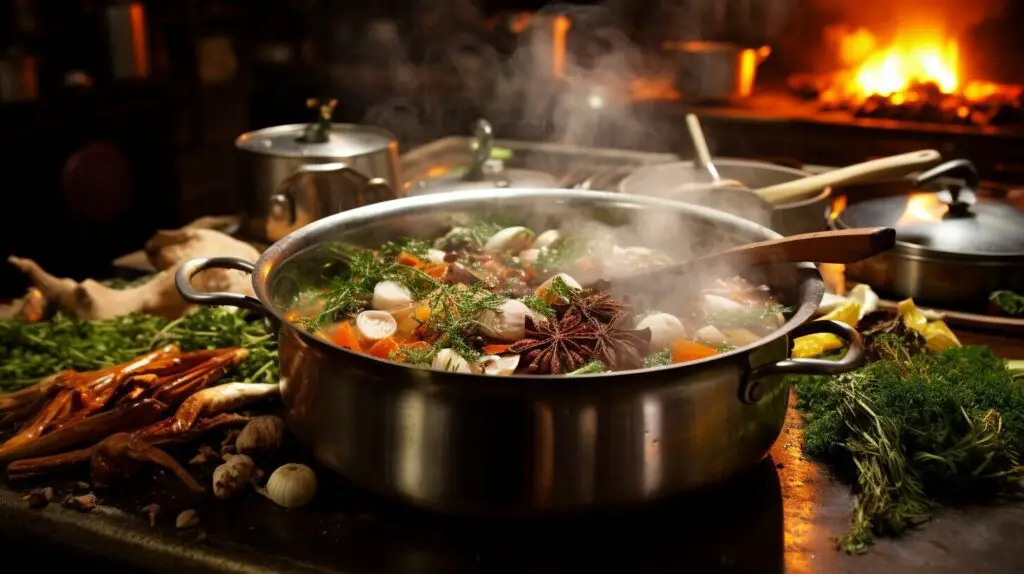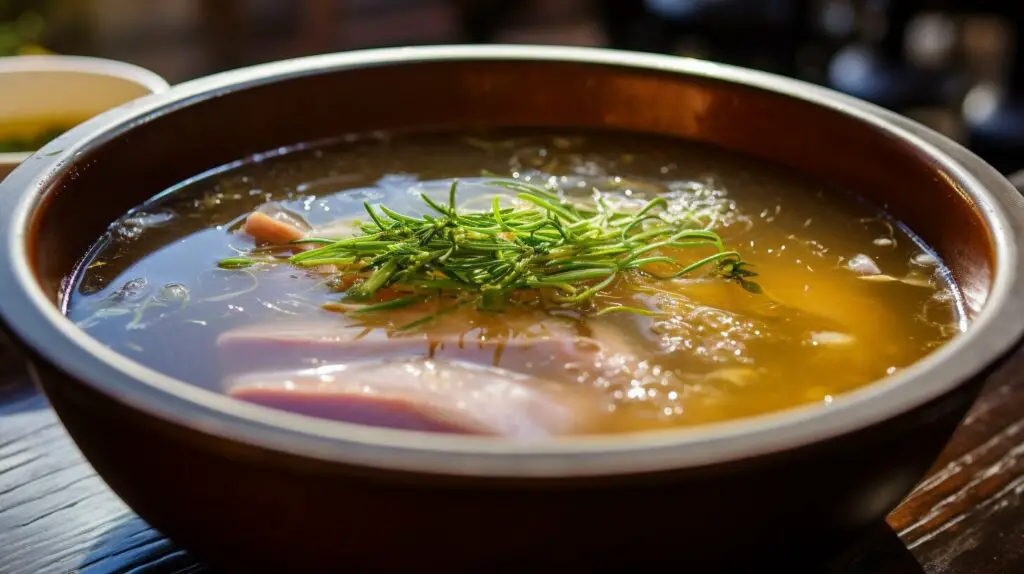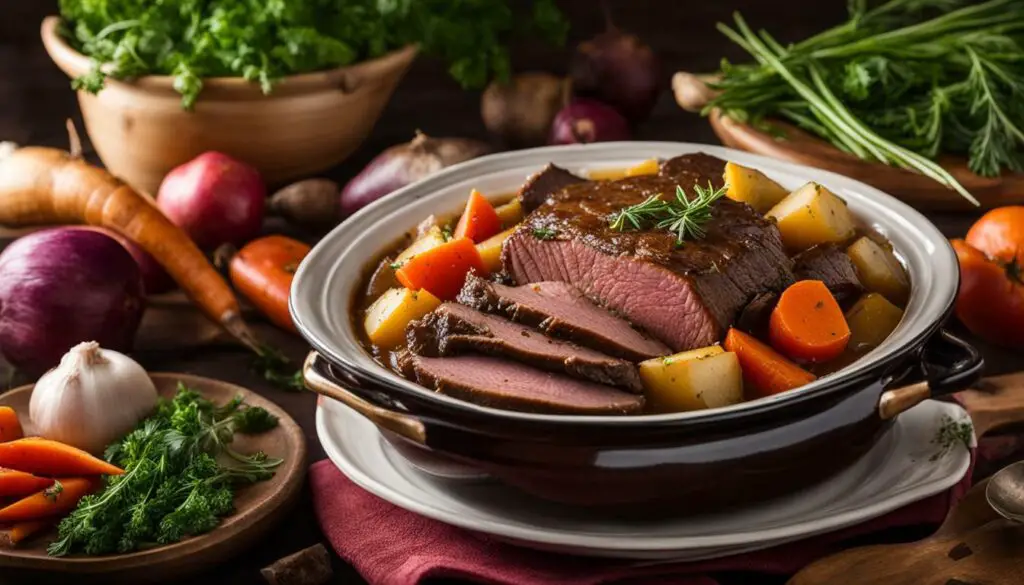As a professional copywriting journalist, I can tell you that soup from duck carcass is a unique and satisfying culinary experience. The bones of a duck carcass are a perfect base for creating a rich and flavorful broth that is perfect for soup. Using duck carcass as the base for your soup offers a depth of flavor that is unmatched by other types of broth. The resulting soup is comforting, delicious, and sure to impress.
In this section, we will explore the art of making soup from duck carcass and the delightful flavors it brings. We’ll discuss the benefits of using duck carcass, as well as share a recipe for homemade duck carcass soup.
- Soup made from duck carcass offers a unique and satisfying culinary experience.
- Using duck carcass as the base for your soup offers a depth of flavor that is unmatched by other types of broth.
- Duck carcass soup is comforting, delicious, and sure to impress.
- In this section, we will explore the art of making soup from duck carcass and share a recipe for homemade duck carcass soup.
- The benefits of using duck carcass will be discussed, including how it enhances the flavor of your soup.
Duck Carcass Soup Recipe: The Art of Using Duck Carcass for Soup
If you’re looking to make a flavorful soup that’s both delicious and nutritious, consider using duck carcass as your base. It may seem unorthodox, but using the carcass is a cooking technique that has been used for centuries, and for good reason. The duck carcass provides a rich and unique flavor that elevates any soup recipe.
Before starting the recipe, ensure that the duck carcass is stripped of all meat. This recipe is for a basic duck carcass soup that can be customized to your liking.
Ingredients
| Ingredients | Measurement |
|---|---|
| Duck Carcass | 1 |
| Water | 8 cups |
| Onion | 1 medium |
| Carrot | 2 medium |
| Celery | 2 stalks |
| Bay leaf | 2 |
| Garlic | 3 cloves |
| Salt | 1 tsp |
| Pepper | 1/2 tsp |
Instructions
- Place the duck carcass in a large pot and cover with water.
- Add in the onion, carrot, celery, bay leaf, garlic, salt, and pepper.
- Bring the mixture to a boil and reduce heat to low. Simmer for 2-3 hours.
- Remove the carcass and vegetables from the pot, leaving only the broth. Strain the broth through a fine-mesh sieve.
- Serve hot and enjoy your homemade duck carcass soup!
One of the best things about this recipe is its versatility. You can add in your favorite vegetables, herbs, and spices to customize the flavor, or even use the broth as a base for other dishes like risotto or braised meats.
Using a duck carcass may seem intimidating, but with this easy duck carcass soup recipe, it’s a breeze. Give it a try and savor the rich flavor of homemade duck carcass soup.

Making a rich and flavorful duck carcass soup starts with creating a delicious broth or stock. The carcass of a duck is full of collagen, which when boiled, creates a gelatinous texture. This texture helps to give the soup a smooth and thick consistency, as well as adding a depth of flavor that cannot be achieved with just water or store-bought broth.
To make a broth from duck carcass, cover the bones with water in a pot or large saucepan. Add aromatics such as onion, celery, and carrots, along with spices like bay leaves, thyme, and peppercorns. Simmer the mixture over low heat for at least 2-3 hours, allowing the flavors to infuse and the collagen to be released from the bones.
Once the broth is done, strain it through a sieve, discarding the solids, and refrigerate it overnight. The next day, remove the layer of hardened fat from the surface and use the broth for your soup, or freeze it for later use as a base for other dishes.
A stock, on the other hand, is made by simmering the bones for a longer period of time, usually around 6-8 hours. This process extracts even more collagen from the bones, resulting in a richer and more concentrated flavor. Stock is typically used as a base for sauces, gravies, and stews, as it provides a stronger and more distinct flavor than broth.
When it comes to maximizing the flavor of your duck carcass broth or stock, there are a few tips to keep in mind. First, be sure to use quality ingredients, such as fresh herbs and vegetables, and choose a high-quality duck carcass. Second, skim any impurities from the surface of the broth as it simmers, to prevent a cloudy appearance and off flavors. Finally, allow the broth to cool completely before refrigerating or freezing, to ensure it stays fresh and flavorful.

If you’re looking for a simple and convenient way to make duck carcass soup, using a slow cooker is a great option. Not only does it save time, but it also allows the flavors to develop over a longer period of time, resulting in a more rich and flavorful soup.
To adapt the recipe for a slow cooker, start by browning the duck carcass in a skillet just as you would in the stovetop method. Once browned, transfer the carcass to your slow cooker with the onions, garlic, herbs, and water. Set your slow cooker to low and let it cook for 8-10 hours, or until the meat falls off the bones.
After the soup has finished cooking, strain it through a fine mesh sieve to remove the bones and any unwanted bits. Then, return the soup to the slow cooker and add in your desired vegetables or noodles. Cook on high for an additional 30-60 minutes, or until the vegetables are tender and the noodles are cooked through.
Using a slow cooker to make duck carcass soup allows you to enjoy the rich and comforting flavors without the fuss of constantly monitoring the stove. Give it a try and savor the deliciousness!

In conclusion, making soup from duck carcass is an excellent way to elevate your soup-making skills and create a unique and satisfying culinary experience. By utilizing the carcass, you can extract maximum flavor and create a rich, delicious broth that will warm your soul and impress your guests.
Whether you follow a traditional stovetop method or opt for the convenience of a slow cooker, making duck carcass soup is easier than you might think. With a few simple ingredients and some basic cooking skills, you can enjoy a comforting and flavorful soup that is sure to become a staple in your meal rotation.
So why not give it a try? Next time you have a leftover duck carcass, don’t throw it away – turn it into a delicious homemade soup instead. Your taste buds will thank you!
FAQ
Q: Why should I use duck carcass to make soup?
A: Duck carcass adds a rich and unique flavor to the soup. It also helps to create a hearty broth that is full of nutrients.
Q: What is the recipe for homemade duck carcass soup?
A: Here is a simple recipe for homemade duck carcass soup:
– Start by simmering the duck carcass in a pot with water, vegetables, and herbs.
– Allow it to cook for several hours to extract the flavors from the carcass.
– Once the broth has developed a rich flavor, strain it and return it to the pot.
– Add your choice of vegetables, meat, and seasonings to create a delicious soup.
– Simmer until the vegetables are tender and the flavors have melded together.
– Serve hot and enjoy!
Q: What is the difference between duck carcass broth and stock?
A: Duck carcass broth is typically made by simmering the carcass with vegetables and herbs for a shorter period of time. It is lighter in flavor and can be used as a base for soups, stews, and sauces. On the other hand, duck carcass stock is simmered for a longer period of time, often with additional ingredients like bones and aromatics. It has a more concentrated flavor and can be used as a standalone soup or as a base for other dishes.
Q: Can I make duck carcass soup in a slow cooker?
A: Yes, making duck carcass soup in a slow cooker is a convenient option. Simply follow the recipe mentioned earlier and adapt it for the slow cooker. Place the duck carcass, vegetables, herbs, and water in the slow cooker and cook on low for 6-8 hours or on high for 3-4 hours. This slow cooking method allows the flavors to develop and ensures a tender and flavorful soup.






